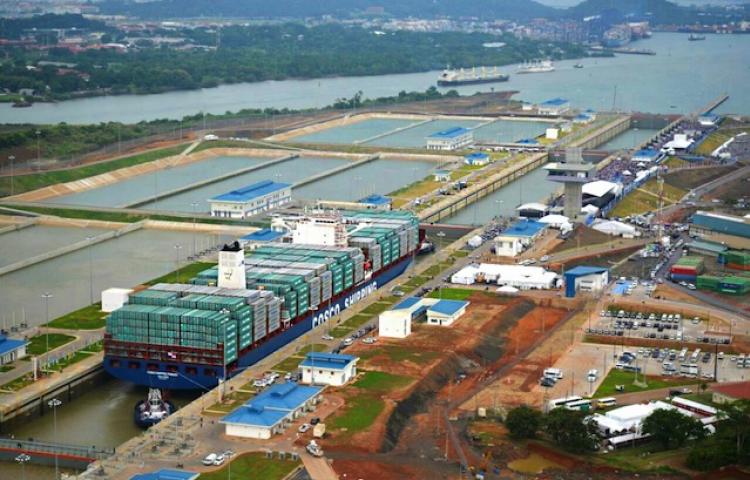Laden with 9,000 shipping containers, the 984’x158’ Cosco Shipping Panama officially inaugurated the expanded Panama Canal Sunday, a $5.25 billion project that may bring more Asian trade to U.S. East Coast ports. The expansion may also help U.S. grain shippers and liquefied natural gas exports better compete in the world marketplace.
Fireworks burst and a cheering crowd waved Panamanian flags as the ship entered the new Agua Clara locks in Colon province. The first of the so-called post-Panamax category of container ships – now often called neo-Panamax – was preceded June 9 by a bulk carrier used for final testing of the canal’s new locks.
The 755’x120’ liquefied petroleum gas (LPG) tanker Lycaste Peace held honors for the first transit reservation on Monday June 27. Those bookend passages of bulk cargo and liquefied fuel vessels are significant to observers of the U.S. shipping industry.
At a Saturday evening event, canal administrator Jorge Luis Quijano announced the expanded canal had 170 bookings, mostly for container ships and LNG and LPG tankers, said Mike Steenhook, executive director of the Soybean Transportation Coalition, who attended the opening ceremonies.
“Given the significant width of LNG and LPG vessels, the Panama Canal heretofore has not been able to accommodate such shipments via the original locks,” Steenhook said in an email. “The larger locks will be able to accommodate them – opening up a new business line for the Panama Canal. It is projected that the expanded canal will be able to handle 10 to 12 transits each day. This will add to the approximately 40 transits a day the original two-lane canal accommodates. “
That’s an avenue for more U.S. LNG shipments to Asian markets. Cheniere Energy was first to begin exports of U.S.-produced shale natural gas from its terminal at Sabine Pass in Louisiana, and will open a second facility there in August.
Still to be seen is the wider canal’s effects for U.S. grain exports. About 600 million bu. of American soybeans transit the Panama Canal annually, “the number one agricultural commodity utilizing this critical link in the logistics chain,” Steenhook said.
Usually soybeans go in 50,000- to 60,000-dwt vessels, and potentially the ability to ship more in bigger vessels “will present a compelling option for soybean and grain shippers as they strive to remain profitable in an increasingly competitive global market,” Steenhook said. So far no soybean or grain vessels have booked for transit, but that will likely happen later this year following the U.S. harvest, he said.
Delayed two years by cost overruns and labor strife, the canal opening comes at a time of slowdowns both in global shipping and China’s economy. Still, U.S. port agencies and authorities have forged on with preparing infrastructure for the new generation of supersized container ships, and U.S. tugboat operators, designers and builders are going up in power and technology to meet those demands.




